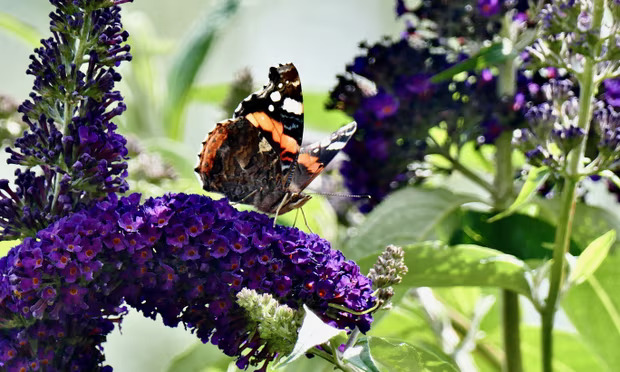My garden has become a haven for an unprecedented number of peacocks and red admirals, a phenomenon that could be attributed to the unpredictable weather conditions.
In the tale of butterflies and seasons, where dire warnings of last summer’s drought cast shadows on the fate of this summer’s fluttering companions, an unexpected twist unfolds. While we await the verdict of scientific data, anecdotes from certain corners of Britain paint a picture of a vintage high summer.
In my own garden, where the Buddleia stands as a natural barometer, the story takes a captivating turn. This season has seen a record-breaking visitation of peacocks and red admirals—more than a stunning 20 on a single bush. A remarkable occurrence in the nine years I’ve called this place home.
Renowned nature writer Richard Mabey, caught in the crossroads of awe and cognitive dissonance, describes an “unprecedented explosion” of butterflies over the past fortnight. It’s a juxtaposition that challenges the prevailing narratives of climate and extinction crises.
But what lies beneath this seemingly enchanting spectacle? Richard Fox, the voice of wisdom from Butterfly Conservation, provides insights. This unsettled summer, with its whimsical dance of rain and warmth, appears to be a boon for butterflies. They resiliently navigate daily showers, provided there are warm and dry interludes, and crucially, the caterpillars’ food plants remain vibrant, resisting the fate of shriveling.
Could this be a silver lining in the looming cloud of the climate crisis? With many butterfly species delicately perched at the northern edges of their habitat range in Britain, a nuanced perspective emerges. The tantalizing prospect arises—if, and it’s a substantial if—we manage to rein in chemical farming practices and restore wild habitats, global heating might paradoxically favor butterflies in this region. It’s a delicate dance on the precipice of climate-induced transformations, where local benefits may arise even as the broader canvas witnesses the somber disappearance of species under the unforgiving heat of southern Europe.
Yet, amidst the uncertainty that shrouds the implications of this fluttering spectacle, there’s a call to savor the joy of a half-decent butterfly summer. A fleeting respite, perhaps, that nudges us to marvel at the intricate choreography of nature, even as the broader narrative unfolds with both promise and trepidation.
